In The Community
Every year on March 17th, Ireland and many other countries in the world where there are Irish communities, turn green to celebrate Saint Patrick’s Day. This religious celebration has been around for over 1,000 years and it commemorates the death of Saint Patrick, the Patron Saint of Ireland, who introduced Christianity to the country in the 5th century.
Over time, this religious celebration has turned into a celebration of Irish culture and heritage, packed with parades, good luck charms like the three-leafed shamrock, green clothes, and all things Irish, including food and drinks, particularly Irish beer. Among the countries that celebrate St. Patrick’s Day are the United States, the United Kingdom, Canada, Australia, New Zealand, Brazil, Argentina, and South Africa.
The reason why so many countries in the world have thriving Irish communities is, of course, immigration. Ireland is no stranger to economic hardship, political unrest, and famine, so Irish people have immigrated by the millions in search of a better life. This is a type of life experience they have in common with Latinos.
Actually, Latinos and Irish people have a lot of connections. Here are 10 things you didn’t know about the Irish in Latin American countries:
Most of the Irish people who chose Latin America landed in Argentina

Argentina is home to the fifth-largest Irish community in the world and the largest in Latin America. In the 18th century, Buenos Aires welcomed over 50,000 immigrants from outside the English-speaking world. They moved to rural areas, working as cattle ranchers and sheep farmers, and Argentina became their home away from home. Today, their descendants still live in the country, and they have a rich history there.
The Irish built the Cuban railroad

While Cuba isn’t usually associated with Irish immigration, Irish people did immigrate there even before the 1940s potato famine. That’s because Cuba and Latin America, in general, were prime destinations for struggling laborers. One of the waves of Irish immigration to Cuba happened in 1835, when over 370 workers, most of them Irish, were sent from New York to Havana to work on the Cuban Railway Commission. While the Irish were responsible for helping develop Cuba’s infrastructure, many of them died in the process. Moreover, once the railroad was done, they were abandoned there. This led to some Irish influence in Cuba’s economic, political, and cultural development, though the available research on it is minimal.
The Irish supported Mexico during the Mexican-American War

Battle of Buena Vista, lithograph by Currier & Ives, c. 1847
During the Mexican-American War, a group of Irish immigrants, known as the “San Patricios” or “Saint Patrick’s Battalion,” played a major role. They fought alongside Mexican forces against the U.S. and were driven by a common Catholic identity with the Mexicans. The San Patricios were brave and quite skilled in artillery, so they were of great help. Unfortunately, their support wasn’t enough to avoid the turn of the war against Mexico. Eventually, most of the San Patricios were captured at the Battle of Churubusco and punished, which included execution by hanging.
Simón Bolívar asked Irish soldiers for support during independence

Painting of Simón Bolívar by Arturo Michelena 1895
Simón Bolívar, known as the "Libertador" of South America, didn’t have a smooth campaign for independence from Spanish colonialism. He found himself in difficult situations because his army lacked experience, so he asked British and Irish soldiers for support, recruiting them into his army. The British Legions were mostly Irish veterans (1,700 of them) with extensive military and combat experience. They formed several units, such as the Venezuelan Lancers and Venezuelan Hussars. The help of the British Legions was essential in the fight for independence and the birth of the new republics of South America.
An Irish doctor established the first medical school in Buenos Aires

Sculpture in Buenos Aires dedicated to Miguel O'Gorman by the artist Miguel Blas y Fábregas
Born in Ireland, Miguel O’Gorman was a part of the expedition of the first viceroy of Río de la Plata (now Argentina) in 1777. When peace was reached with Portugal, he settled in Buenos Aires at 62 years old and is considered the father of modern medicine in the country. With over 10 years of experience and a medical degree from Paris, he established the Academy of Medicine in Montevideo, the first medical school in Buenos Aires. He also focused greatly on public health measures, introducing the latest vaccination methods to prevent the spread of disease.
Eliza Lynch became the unofficial “Queen of Paraguay”

Born in Charleville, North Cork, Eliza Lynch became a symbol of resilience in Paraguay. She lost her father during the Irish famine and then fled to France with her mother where she married at 16 to a French army officer. In high society, she met General Francisco Solano López, the billionaire heir to the President of Paraguay. They fell in love and went together to South America. Though they never got married, they lived together and she became not only the unofficial “Queen of Paraguay” (loved by the people and hated by the elite), but also one of the wealthiest women in South America. After witnessing López and their son's death in battle, Lynch was imprisoned and deported to Paris, where she spent her remaining days. Eventually, she was posthumously honored for her patriotism, with her remains repatriated to South America.
Cecilia Grierson became the first female physician in Argentina

Irish Argentine Cecilia Grierson was the first woman to obtain a medical degree in Argentina and she went on to accomplish so much more. She had a remarkable life that went beyond medicine because she challenged societal norms and advocated for the inclusion of women in professions like obstetrics. She founded the School of Nurses and Massage Therapists, pioneered specialties like gynecology, and was elected president of the First International Women’s Congress. You may have heard her motto before: “Deeds. Not words,” which perfectly summarizes her legacy.
Rómulo Antonio O'Farrill Jr. became one of Mexico’s media barons

Born in Puebla, Mexico, Rómulo Antonio O’Farrill Jr. was of Irish descent and he became one of the biggest media barons in Mexico. Alongside his dad Rómulo O’Farrill Silva, he set up Mexico’s first TV station in 1949. The family also started a newspaper chain “Novedades de México,” with a sister paper “The News,” which ran until 2002 and was one of the most-read English newspapers in Latin America. O’Farrill became known as a man of vision for growth and development, no matter the challenges.
Ambrose O’Higgins’s son became the first leader of independent Chile

Ambrose O'Higgins, born in Ballynary, Co Sligo in 1720, was an Irish man who became an essential figure in the history of Chile. He rose through the ranks of the Spanish colonial imperial service and went to South America in 1756, where he helped establish communication channels between Argentina and Chile. O'Higgins's career eventually led him to become the viceroy of Lima, the highest royal official in Spanish America. His son, Bernardo O'Higgins, inherited his wealth and ideals, becoming a revolutionary leader and the first ruler of an independent Chile.
William Brown became the father of Argentina’s navy

Born in Foxford, County Mayo, William Brown was a sailor and naval commander who founded the Argentine navy and is considered one of the nation’s heroes. He played a pivotal role in Argentina’s fight for independence, securing major victories against the Spanish. Brown served Argentina his entire life in wars that followed their independence from the Spanish and then he became governor of Buenos Aires until he died in 1857. His legacy endures to this day and Admirals of the Argentine Navy wear a replica of his sword.
While empanadas may look plain at first sight, biting into them offers an explosion of flavor. April 8th is National Empanada Day, a celebration of their deliciousness, so it’s a good opportunity to learn just how many there actually are. As one of the most popular dishes in Latin America, empanadas exist in many forms. Every country seems to have its own version, and those versions often vary from region to region, so the world of Latin American empanadas is vast and exciting for your tastebuds. Let’s explore:
Empanadas from Colombia

Photo by Edgar Zuniga Jr. on Flickr
Colombians love their empanadas, and they take their family recipes very seriously. In Colombia, empanada dough is made of instant corn flour known as “masarepa” and fillings tend to be savory. Empanadas are also fried, so the crispy texture is a must. They love using bell pepper, onion, and garlic in their stews, and Colombian empanadas are usually accompanied by “ají,” a tangy, spicy sauce that elevates and sharpens the flavors.
Empanadas from Venezuela
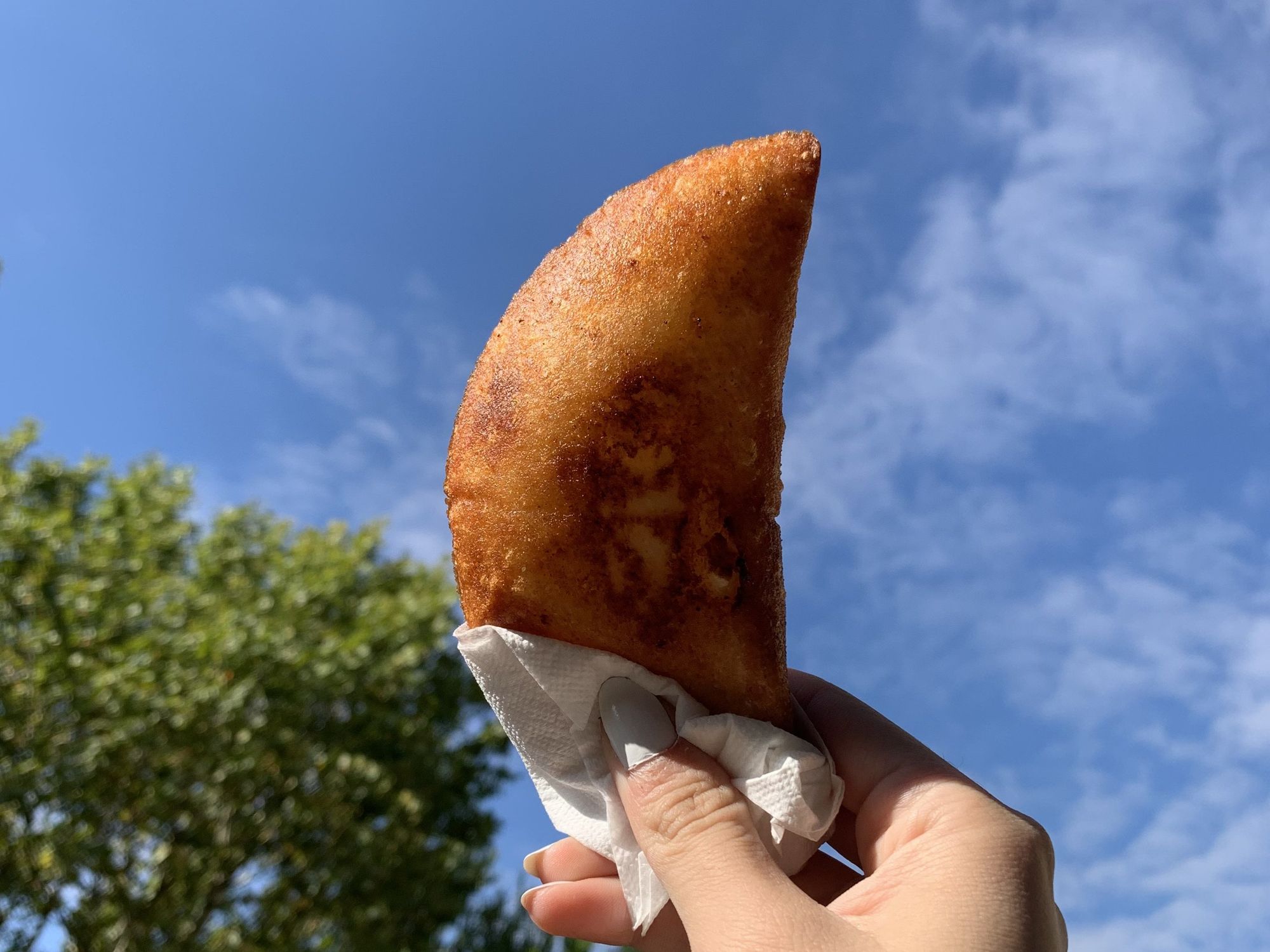
Photo by Valeria Silva on Wikimedia Commons
Venezuelan empanadas are similar to Colombian empanadas in that they’re savory and always fried. They’re made with “P.A.N” flour, which is a pre-cooked white corn meal, and sometimes they’re made with the yellow corn meal version of P.A.N flour, which gives the dough more color and flavor. Venezuelan empanada fillings are as varied as you can imagine! From something as simple as mashed potatoes and cheese, to “pabellón criollo” filling, which combines all the ingredients of the national dish. Namely, shredded beef, black beans, rice, and fried sweet plantain for sweet and savory combo.
Empanadas from Argentina

Argentinian empanadas are quite different in shape and flavor, so they’re also very popular. The main difference with other Latin American empanadas is that Argentinian empanadas are not made with corn flour, but rather wheat flavor. This makes the texture of the dough a bit flaky and tender but still crisp on the outside. Corn flour empanadas are heartier in comparison. In Argentina, empanadas can be baked or fried, and the most common fillings are ground beef, cubed beef, egg, and ham and cheese, among others. They’re also served with chimichurri, a delicious herb sauce that adds even more flavor.
Empanadas from Honduras

Photo by Instituto Cervantes de Tokio on Flickr
Empanadas in Honduras are known as “pastelitos” and they’re usually baked rather than fried. The dough is similar to Argentinian empanadas because it’s also made with wheat flour, making the empanadas resemble a pastry. The traditional fillings are meat and beans with cheese, so they’re quite hearty and delicious. Usually, they’re served with the Honduran version of pico de gallo, which is known as “chimol,” and it’s a must with every bite.
Empanadas from Mexico
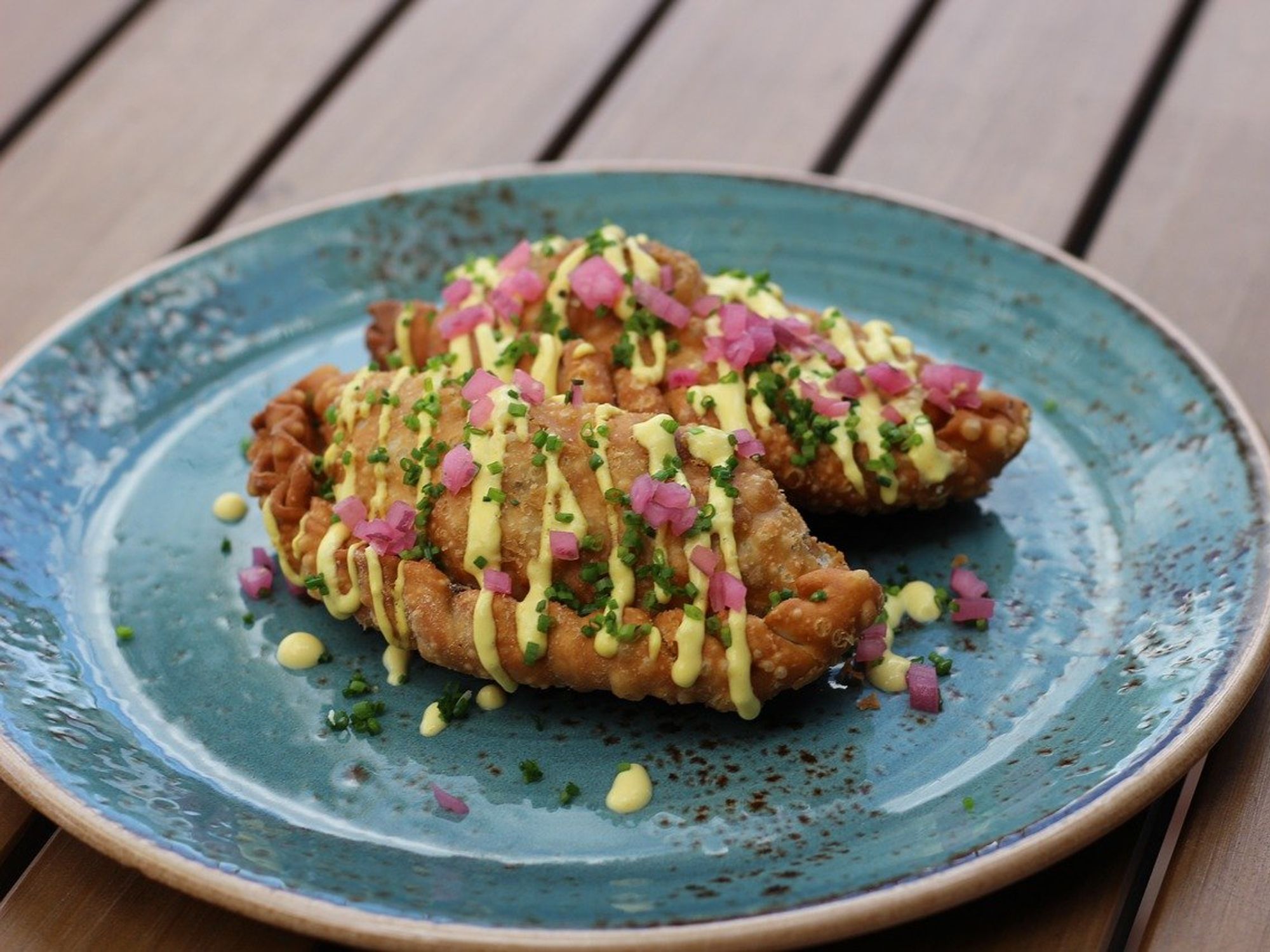
When people think about Mexican food, tacos or burritos are the first things that may come to mind. However, they also have empanadas, and they’re crazy good! In Mexico, you can find both wheat flour and corn flour empanadas, so there’s a good variety to enjoy. The fillings often include meat, more commonly chorizo, which offers a burst of flavor. However, the simple beans and cheese combination is also very popular, and for good reason.
Empanadas from Puerto Rico
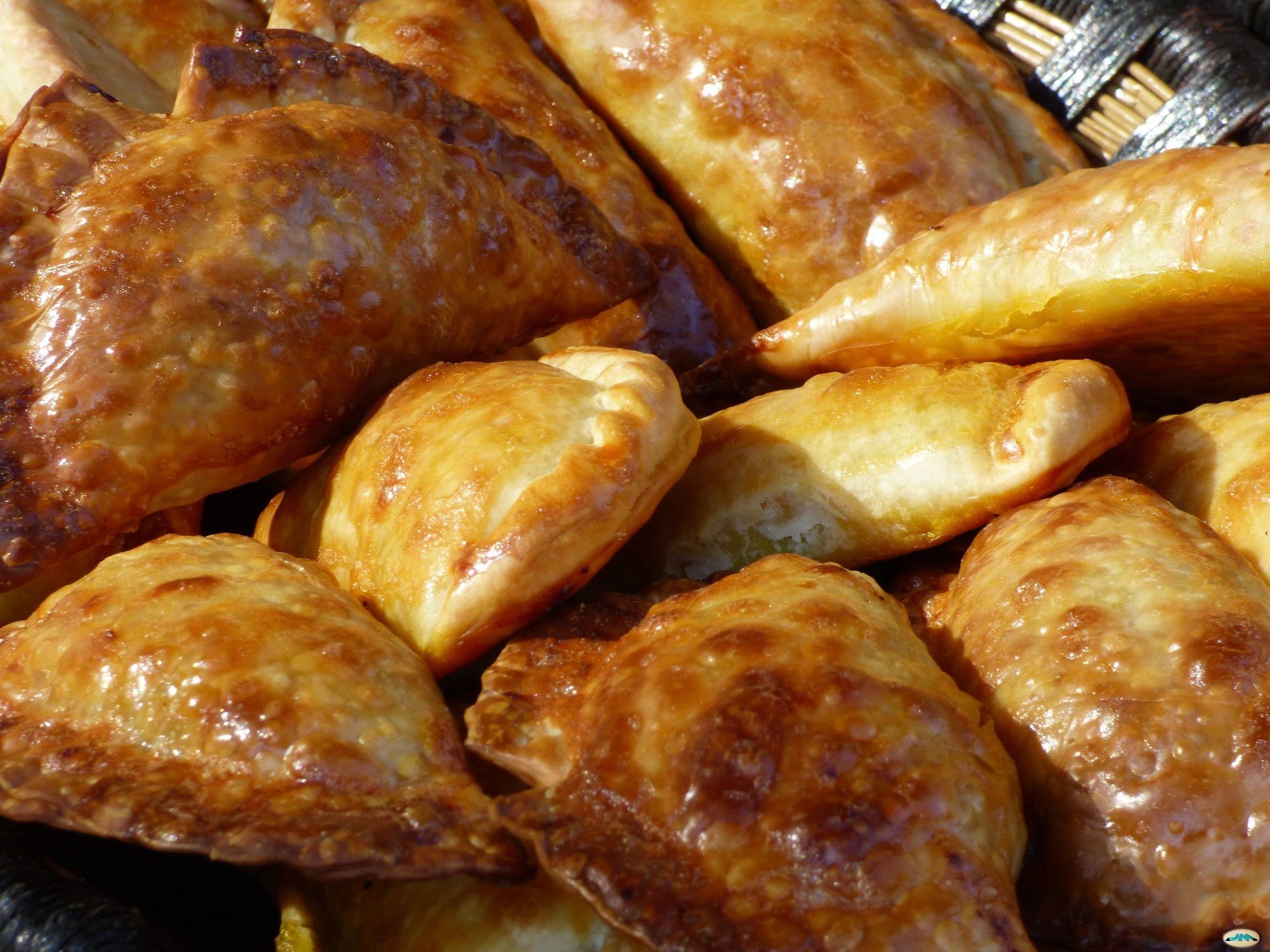
Photo by juantiagues on Flickr
Puerto Ricans don’t joke about their food, let alone their empanadas. Also known as “pastelillos” or “empanadillas,” Puerto Rican empanadas are known for their flaky texture and flavorful fillings, which are usually savory. In Puerto Rico, empanadas are made with pastry dough, so they’re also made with wheat flour. The dough is usually on the thin side, making these empanadas super crispy. The most common filling is ground beef with potatoes, but you can also find chicken and seafood fillings. Also, Puerto Rican empanadas are accompanied by a simple mayo-ketchup dip, which is the cherry on top. They’re a staple food bite at parties!
Empanadas from El Salvador
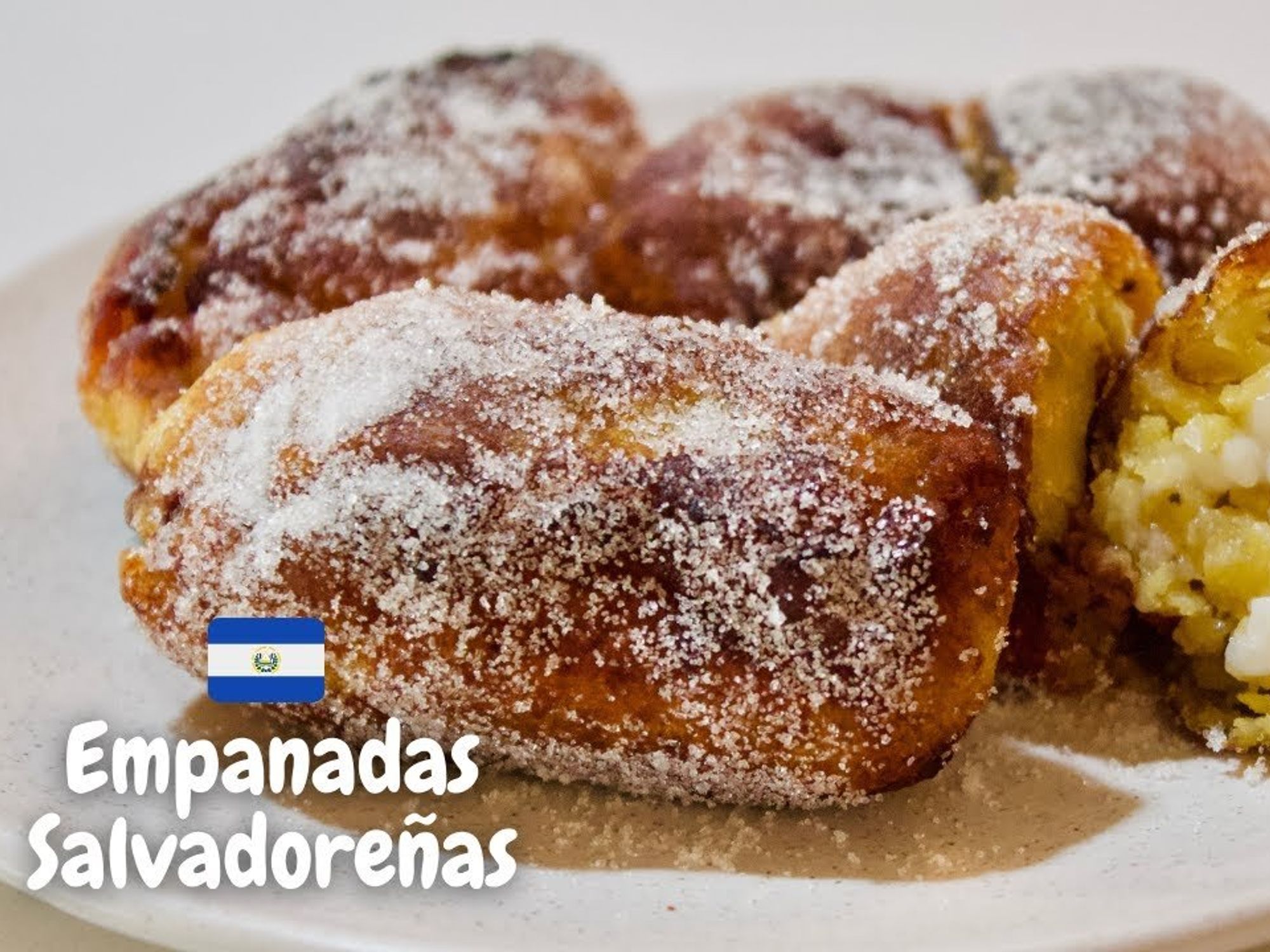
In El Salvador, empanadas are usually consumed as snacks or desserts because they’re both savory and sweet. Mostly sweet! They’re completely different from the other empanadas we’ve discussed so far because the dough is made of mashed sweet plantains and they’re usually coated with white sugar as well. The filling is usually refried beans, which helps balance out the sweetness. However, you can also find Salvadorian empanadas with milk filling, which is a soft cream made with milk, cornstarch, sugar, and cinnamon.
Empanadas from Peru

In Peru, empanadas are also quite different from the others we’ve explored here. The main difference is the dough, which is very similar to pizza dough. That makes the texture more similar to bread. They’re usually baked and on the thin side. The stars of the Peruvian empanadas are the fillings, though, which are very flavorful. The most typical filling is beef seasoned with ají panca, green olives, and hard-boiled eggs. The chili pepper adds mild spiciness and a nice smoky flavor, which adds complexity to the flavors.
Empanadas from Cuba

Cuban empanadas are not too different from Puerto Rican empanadas because they also use pastry dough. In Cuba, empanadas are flaky, crispy, and thin. As for fillings, they can be sweet or savory. Savory fillings usually involve ground beef and green olives, while sweet fillings combine cream cheese and guava paste. Whether you go for the sweet or the savory, Cuban empanadas offer a burst of flavor and it’s nearly impossible to have just one.
Empanadas from Chile

Photo by mabel flores on Flickr
Last but not least, we have Chilean empanadas, which are made with wheat flour and baked rather than fried. They tend to be sweet and savory, with the traditional filling consisting of ground beef or pork, black olives, and raisins. Sometimes, hard-boiled eggs enter the chat as well. Chilean empanadas are not for everyone because not everyone vibes with raisins, but if you do, this is a flavor combination you should definitely try.
There’s no denying that Latin American empanadas are amazing and the more varieties you try, the more you’ll fall in love with them!
- 7 Unique Latin American Dishes You Can Bring To Holiday Parties ›
- Flavors of Heritage: A Tour of Latino Gastronomic Festivals ›
Cheers, friends! It’s National Beer Day, so what better excuse to explore the exciting world of Latin American beer? From the beaches of Brazil to the Andes mountains, Latin America’s diversity of culture and tradition is reflected by the diverse range of beer available, each with a unique flavor and fizz. Every bottle of Latin American beer is its own experience, so don’t hesitate to try as many as you can. Drink responsibly, though, and don’t drunk text your ex!
Here are the 10 most popular Latino beers:
Modelo Especial from Mexico

Photo by Stock Catalog on Flickr
Modelo Especial is quite a cultural phenomenon in Mexico. It will transport you to a bustling cantina in the heart of Mexico City, surrounded by lively conversations and the smells of street food. Having a cold Modelo Especial is an easy way to give your mood a boost. It will refresh you from head to toe with its smooth, balanced taste, and hit the spot with its crispness. It’s a light beer, so whether you’re unwinding from a long day at home or just want a taste of Mexico, Modelo Especial is the signature go-to.
Polar from Venezuela

Photo by Ignacio Sanz on Flickr
In Venezuela, Polar is the beer brand that rules above all others; synonymous with good times. Polar has earned its reputation as the ultimate thirst-quencher that also has a few options you can explore. Polar Light is the light beer version, so it’s the most refreshing. However, if you want to feel a little buzz and enjoy more flavor, the regular Polar, known as “Negra” due to its dark bottle, is a nice Pilsner beer anyone can get behind.
Quilmes from Argentina
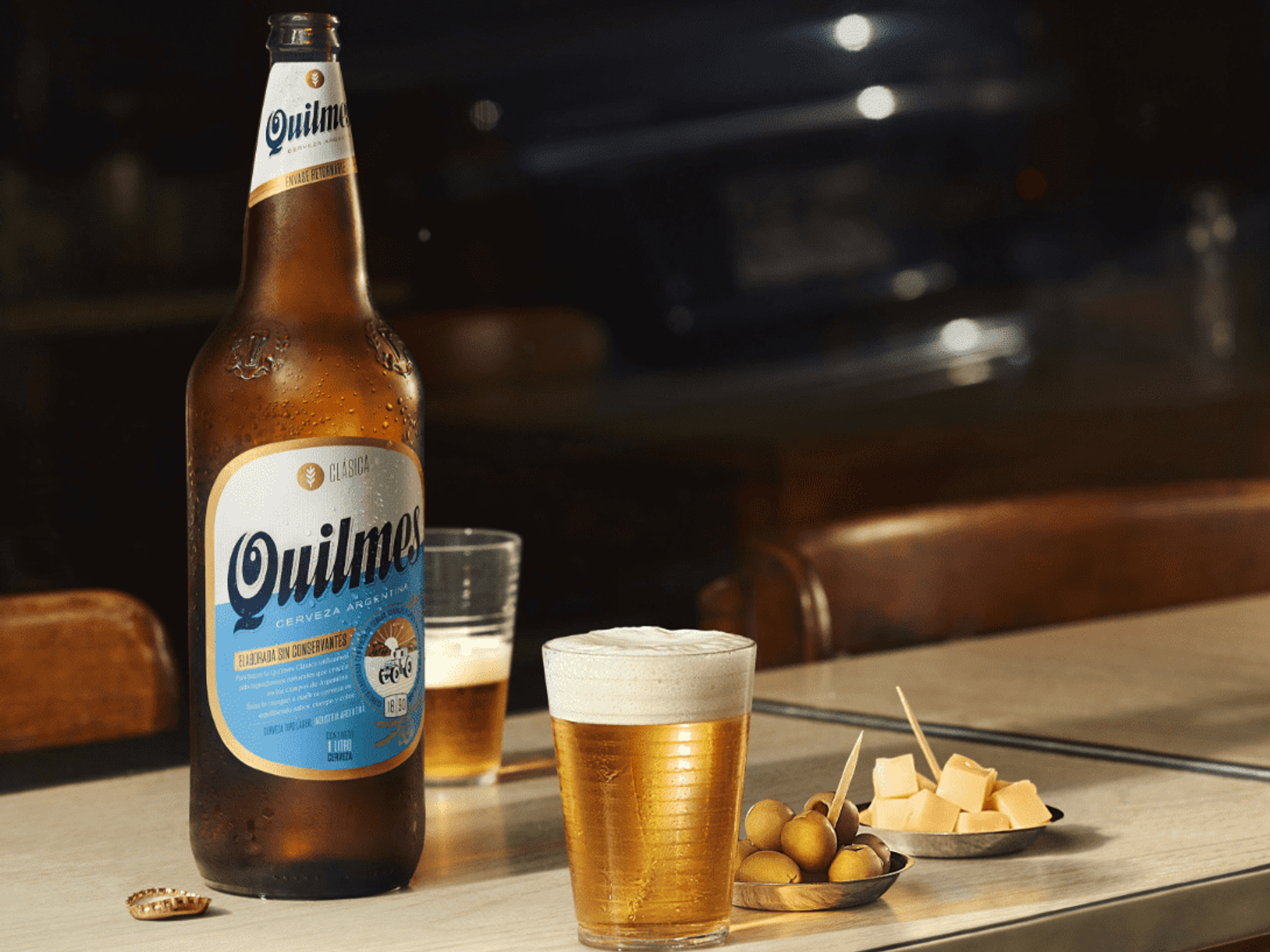
Argentina is known for many things - tango, steak, and of course, Quilmes beer. Quilmes is brewed with pure spring water and locally sourced ingredients, so it has a clean, crisp flavor. It’s as refreshing as swimming in the Atlantic Ocean and it will go perfectly with barbecue or traditional asado. Whether you’re enjoying it at home alone or sharing it with friends, Quilmes offers a nice drinking experience.
Cordillera from Bolivia
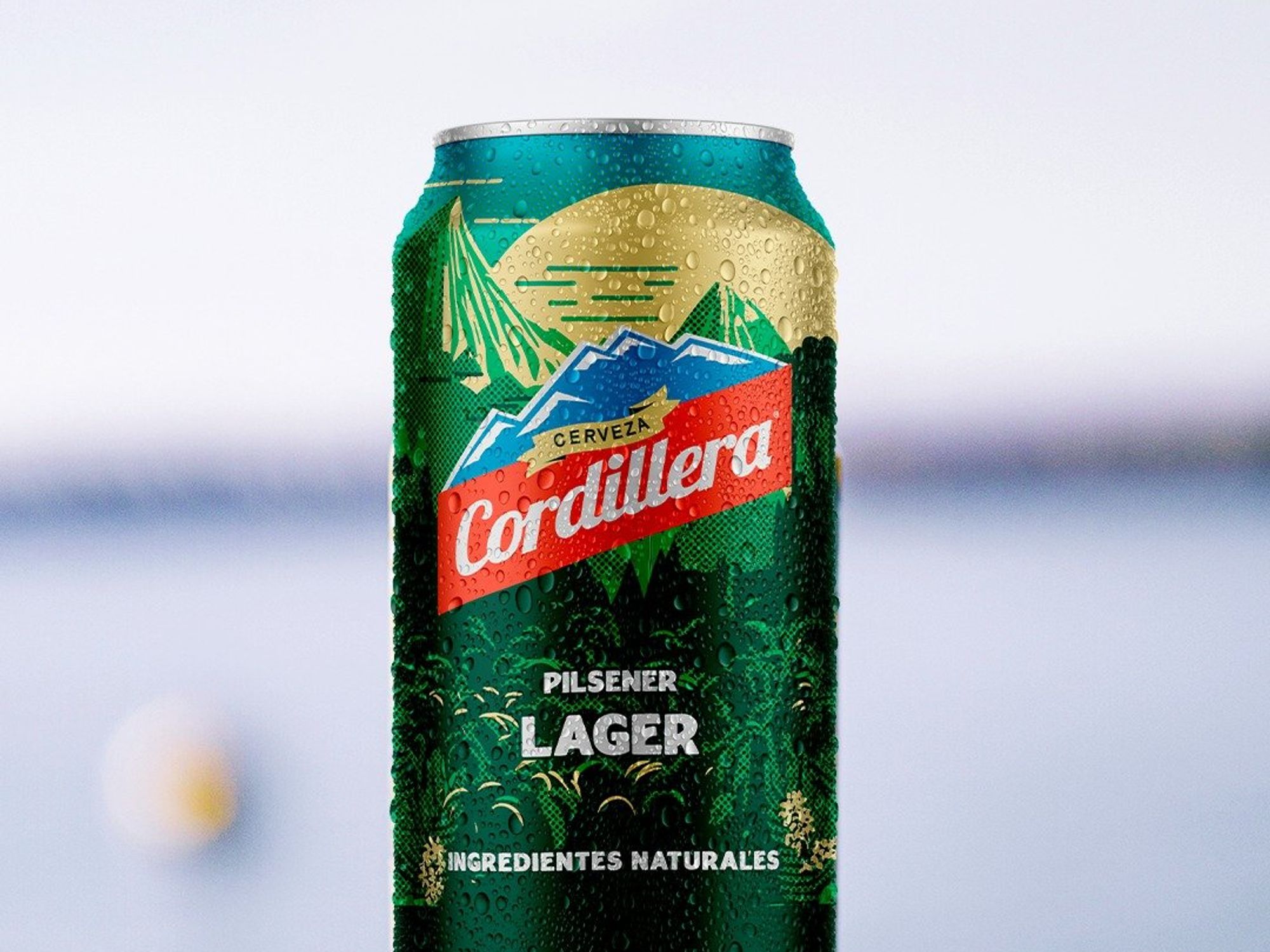
Bolivia is a land of contrasts and the Cordillera beer is one of the best examples of the country’s rich brewing tradition. The taste of Cordillera beer is not like anything you’ve ever tried, so you just have to see for yourself. It’s known for its complex flavor and richness because it’s made with the best barley and contains no chemical additives. It’s very pure and it provides a glimpse into the vibrant culture of Bolivia.
Brahma from Brazil

Brahma beer is iconic in Brazil, so it doesn’t get more authentic than this. Brewed since 1888, this Latino beer has a long, rich history, and you can almost taste its long tradition. It has a smooth flavor with a crisp finish, so it’s the perfect beer to take to the beach as a refreshment. It’s also great for a night out because it will keep you fresh and give you a nice buzz. Oh, and if you’re curious about other Brazilian drinks, the Caipirinha is a good cocktail to explore.
Kross 5 from Chile

The Kross 5 beer is one of the most popular brands in Chile and it’s all due to its bold flavor. If you like your beer to have some complexity to it, you’ll enjoy this American Strong Ale type of beer. It has hints of oak and spice because it’s matured with roasted American oak, so it’s a vibrant, aromatic drink. It’s one of the most interesting beers in Latin America, down to the design of the bottle.
Chapinero Porter from Colombia

Colombia is known for its coffee, beautiful beaches and landscapes, and delicious food. It’s also known for the classic Chapinero Porter, which is the go-to beer option for Colombians. It has a bold and robust taste with notes of coffee and chocolate that linger on your tongue. Doesn’t that sound delicious? It offers a true taste of Colombia and you’ll enjoy every sip!
Imperial from Costa Rica
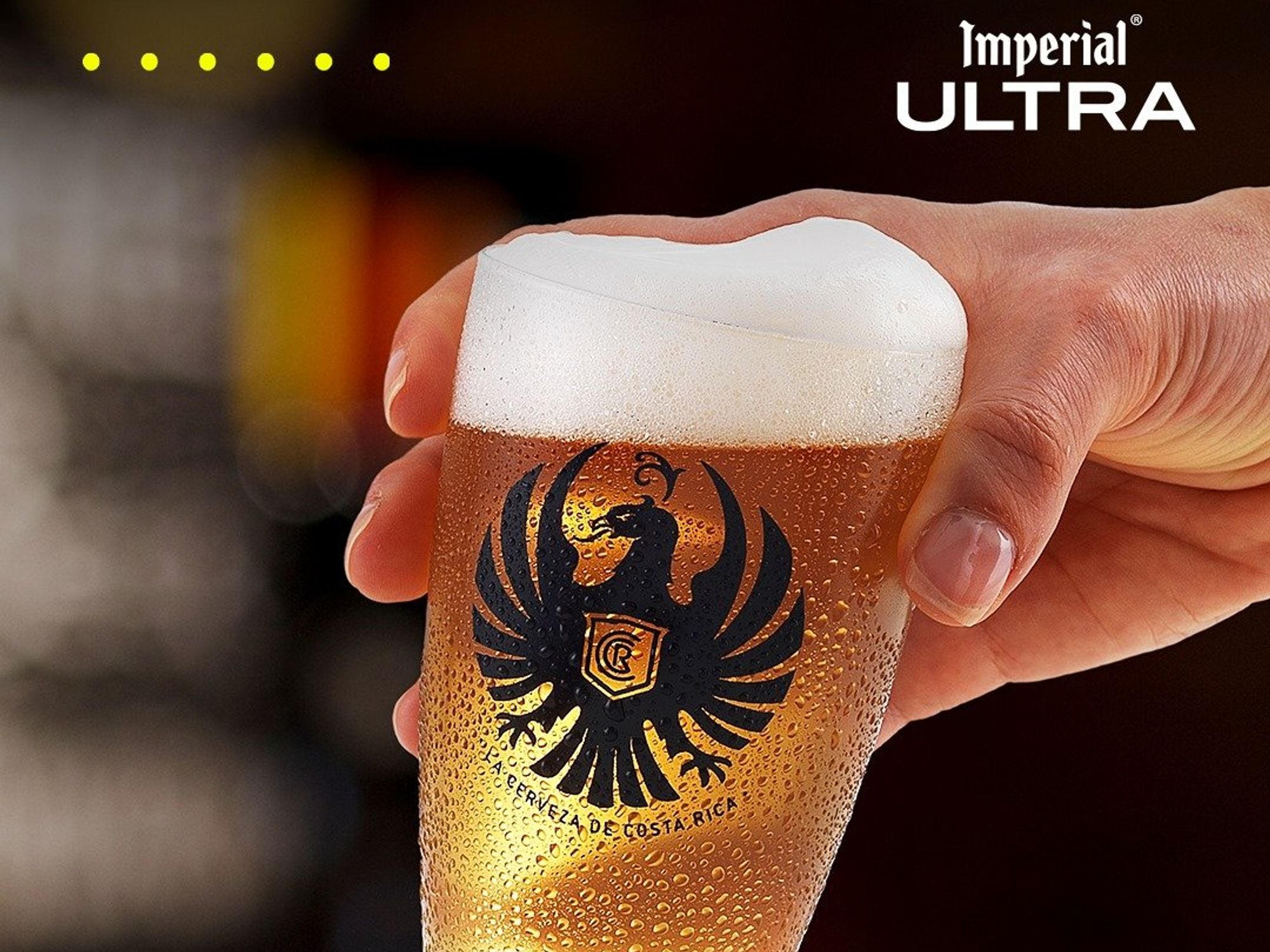
Costa Rica offers more than just natural beauty! It also offers good booze and the Imperial beer is a great example of that. The taste is crisp and refreshing, with hints of citrus and tropical fruit, so it’s another interesting option. This beer is brewed with spring water and local ingredients, which means you’ll be getting an authentic taste of Costa Rica.
Presidente from the Dominican Republic
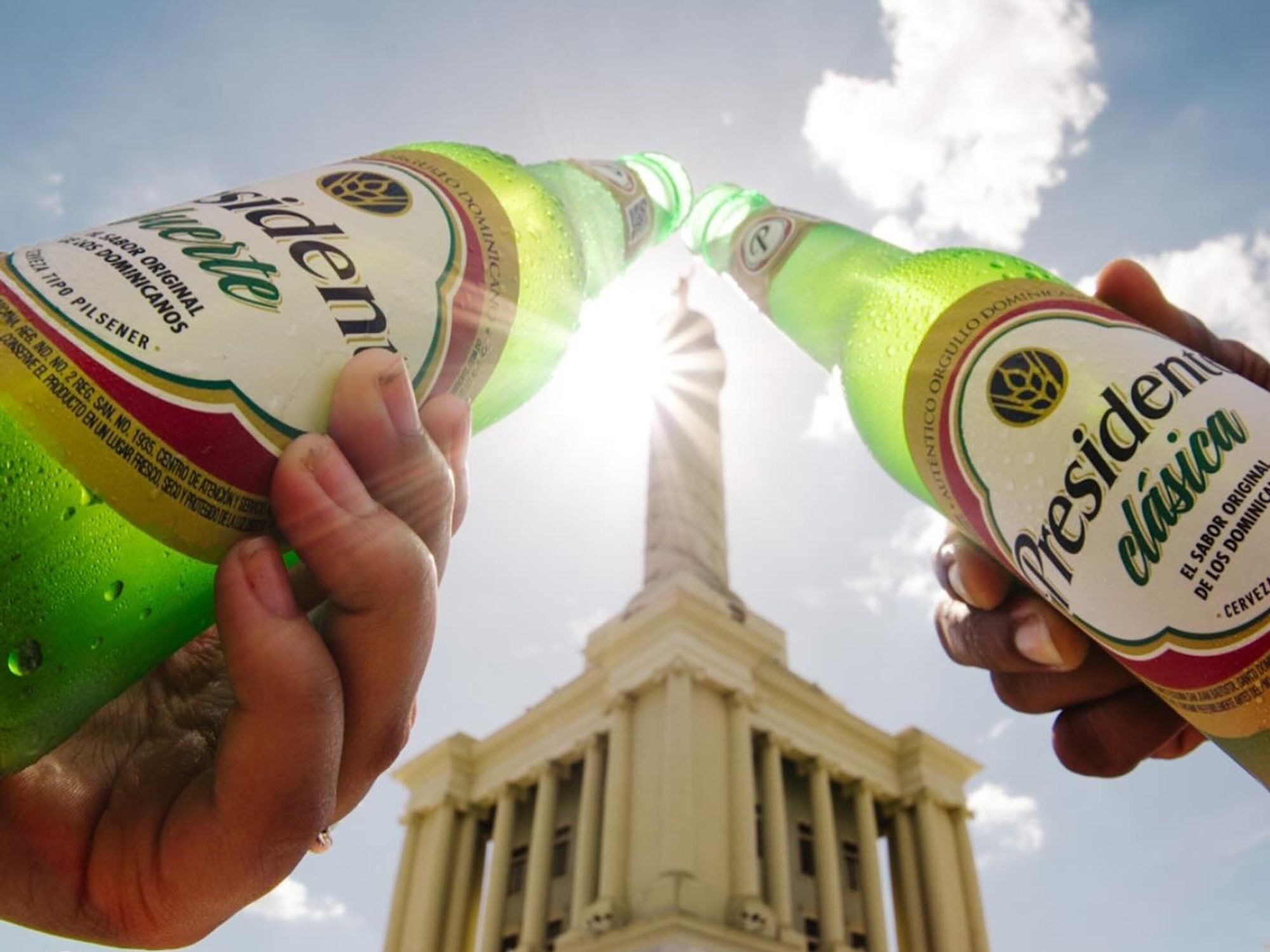
Presidente beer is one of the favorites in the Dominican Republic and for good reason. It has a crisp, fruity, subtly sweet flavor, making it perfect for people who don’t enjoy the usual bitterness of beer. This is a Pilsner type of beer and it’s made with high-quality raw materials, so the taste is as delicious as it gets. It’s also a light option and it’s usually not expensive.
Gallo from Guatemala
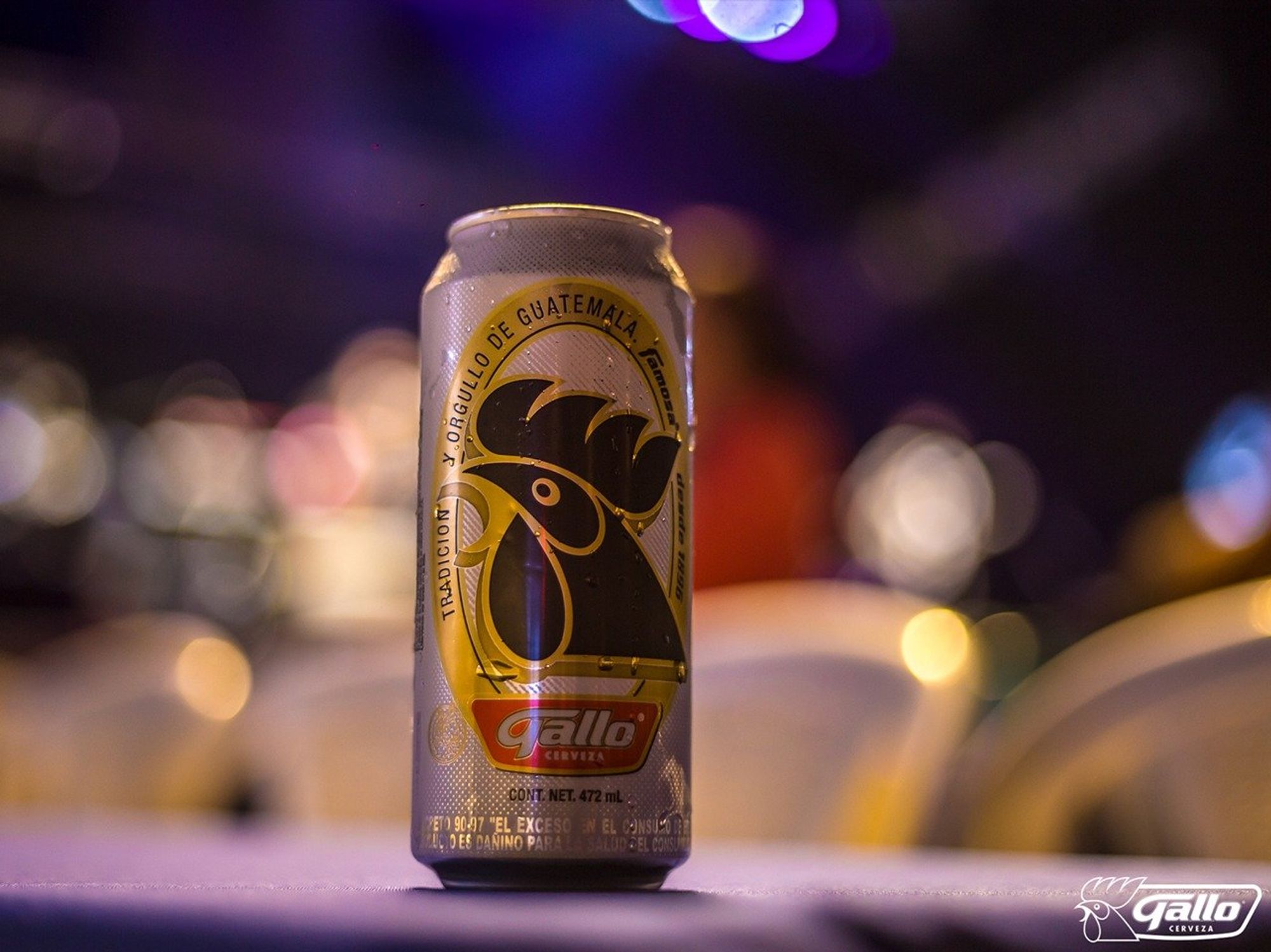
Last but not least, we have Guatemala’s Gallo beer, which can become a quick obsession. This beer is subtly bitter with hints of citrus flavors. However, don’t expect this one to pack a punch. It’s nice and light, so it doesn’t offer much complexity, but it will refresh you on a hot summer day. Gallo beer is a great way to get a taste of Guatemala, so share it with friends and make a night out of it.
- 10 Ways Latin America Has Irish Roots ›
- Hop into the Stories Behind These Latino-Owned Breweries ›
- 10 Must Try Latino Street Foods in Latin America ›
- 10 Latin American Street Foods Everyone Should Try ›




